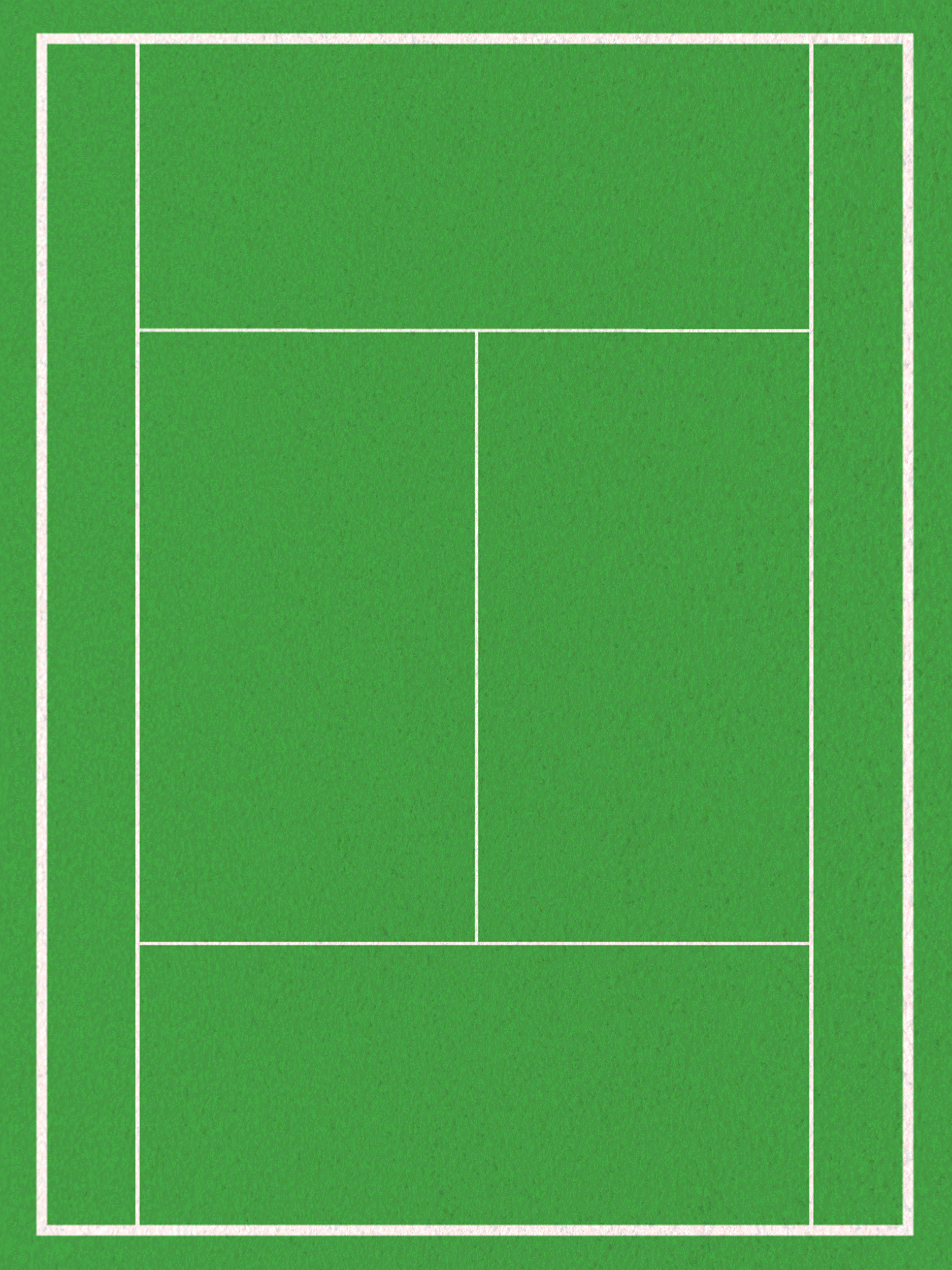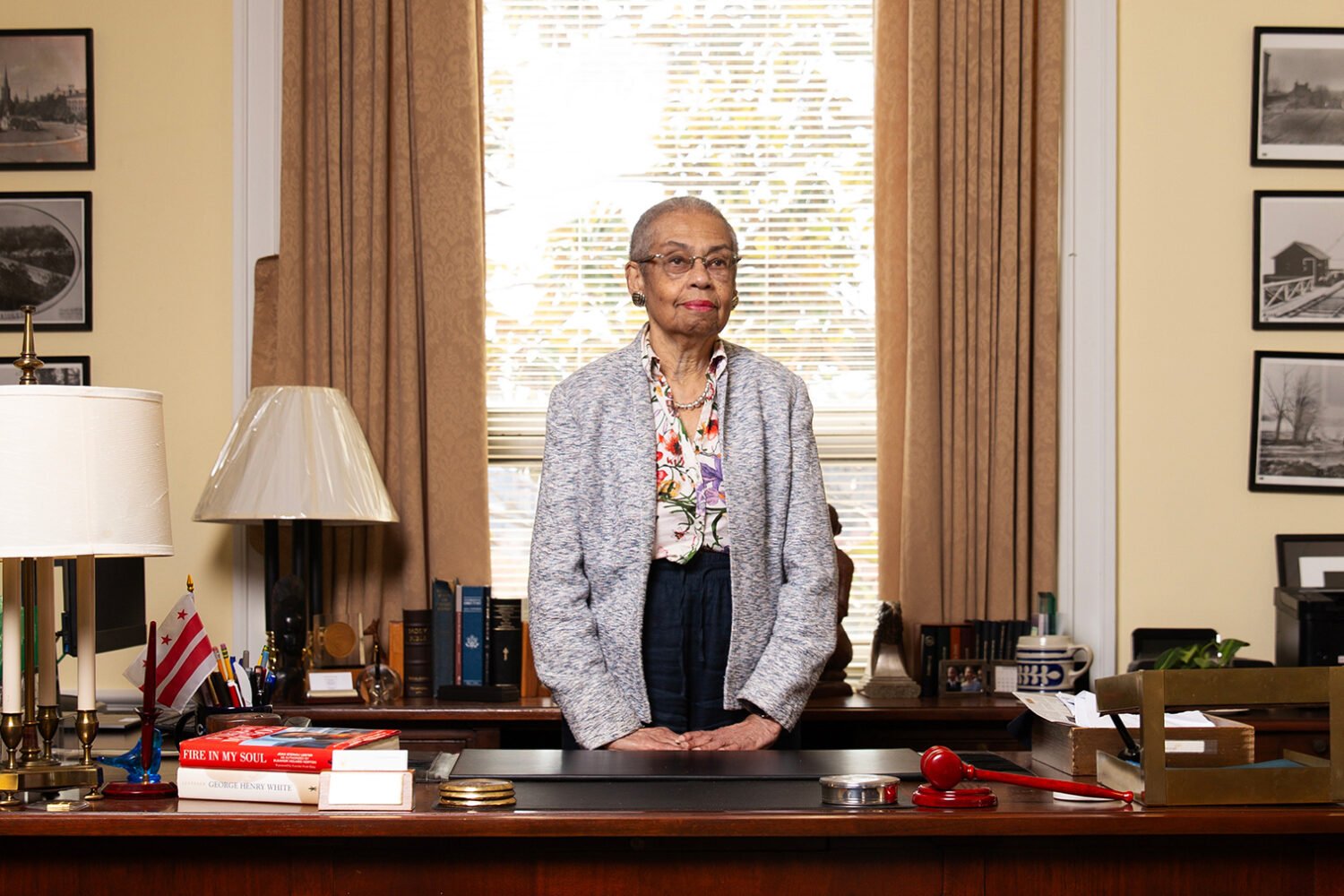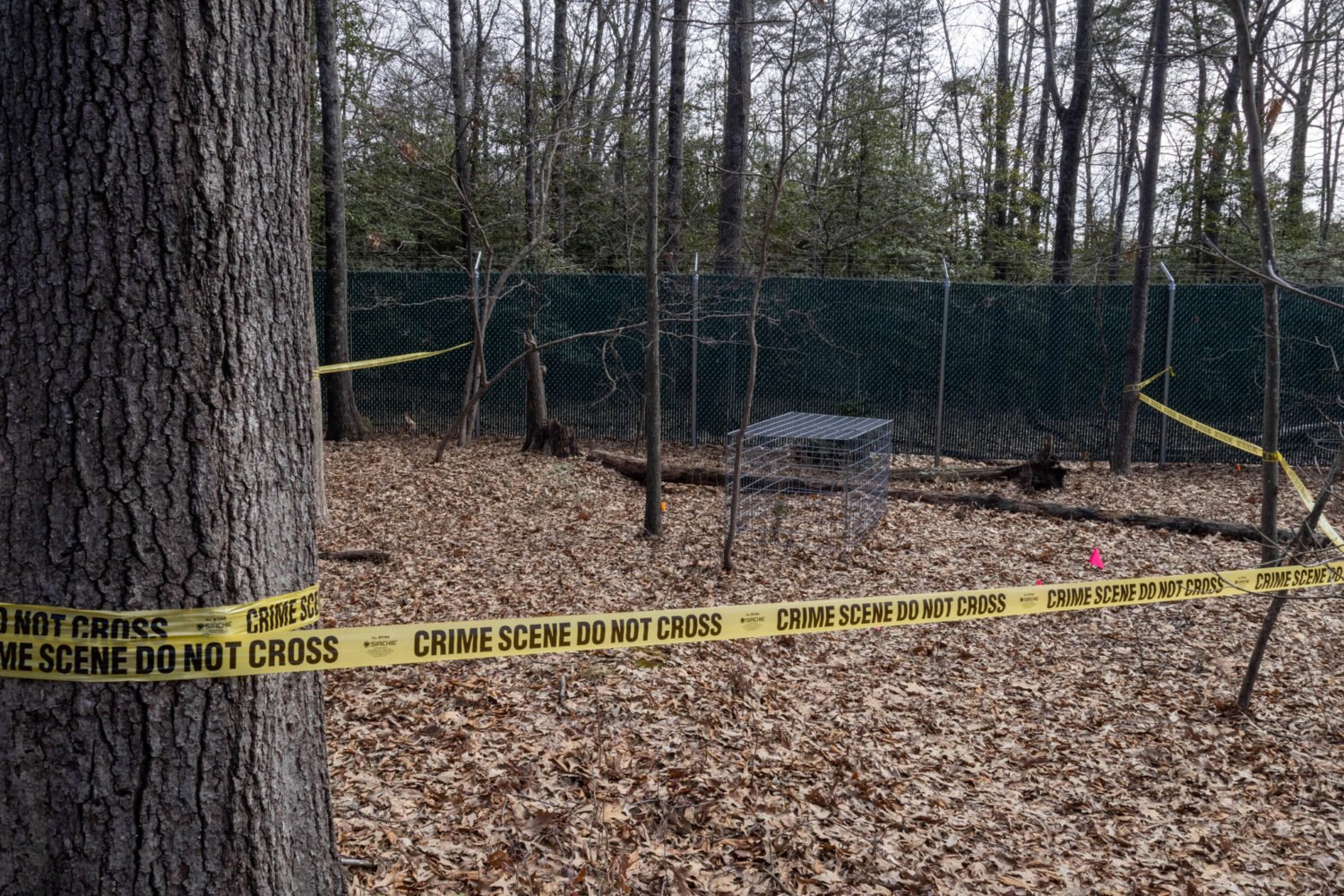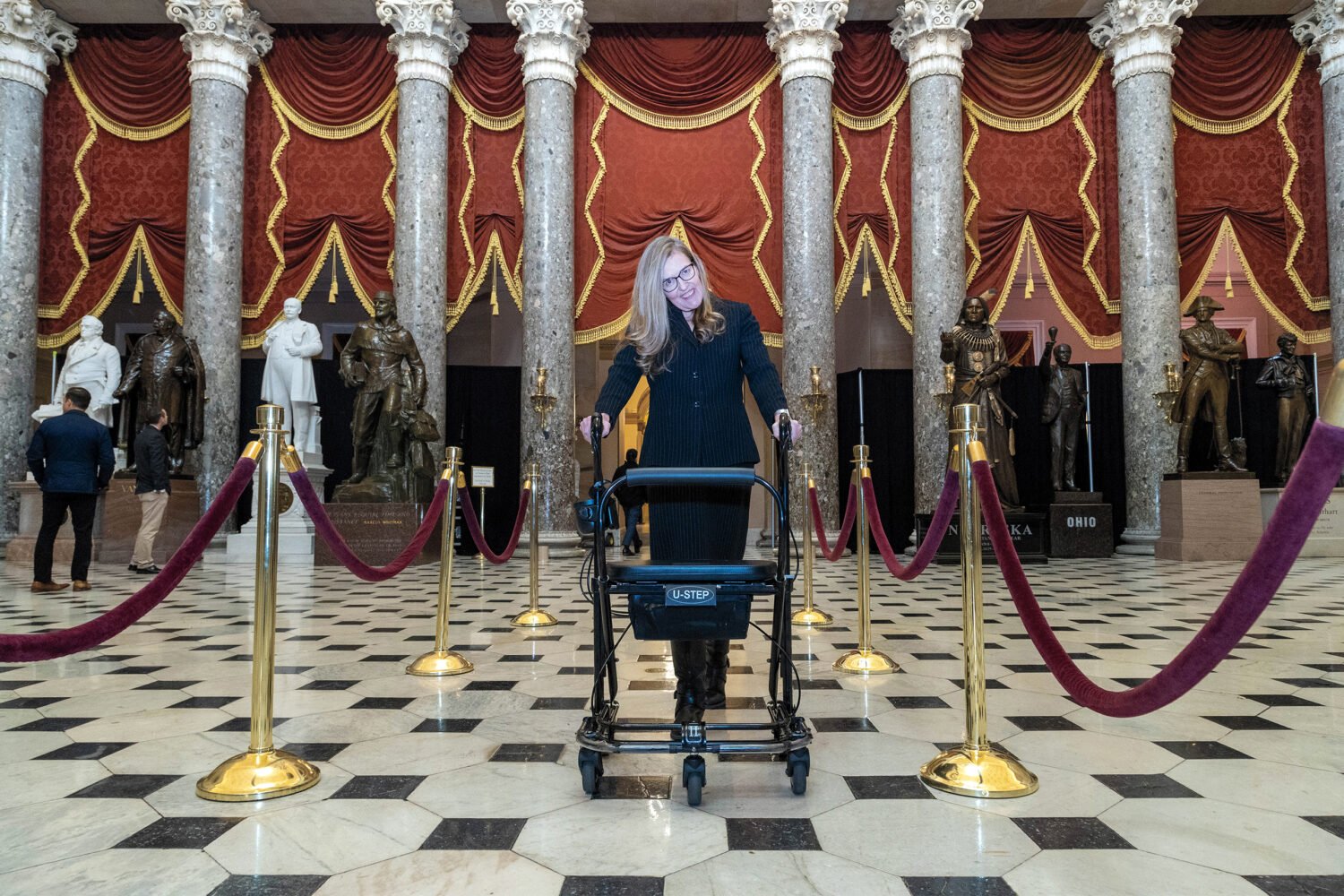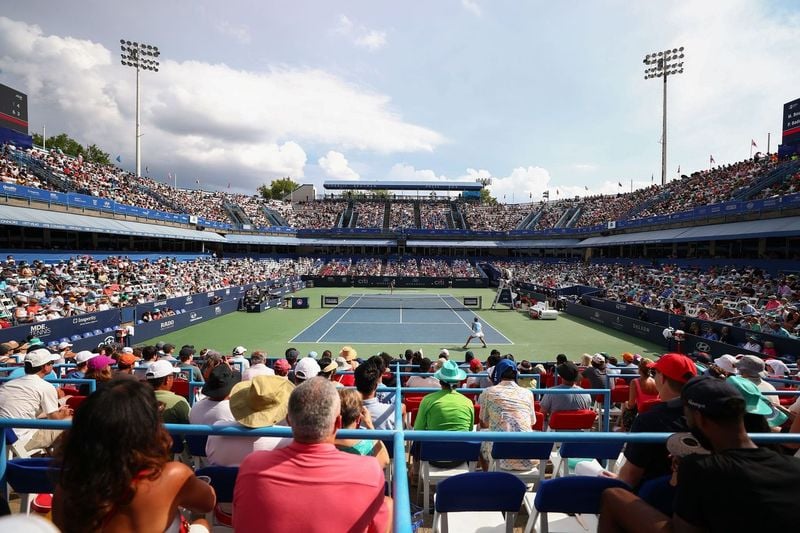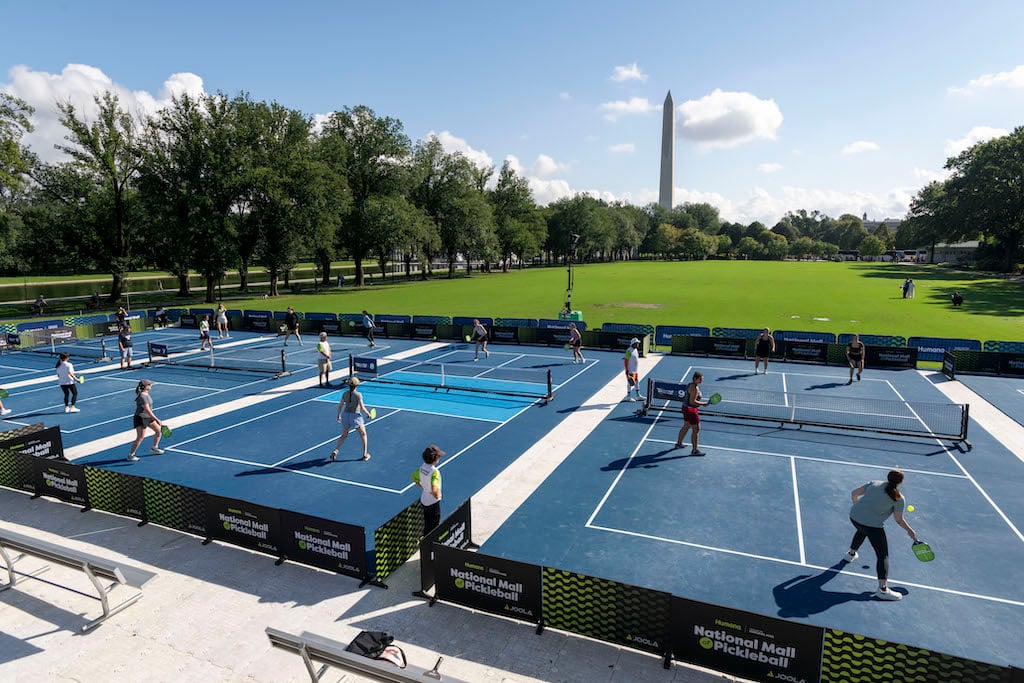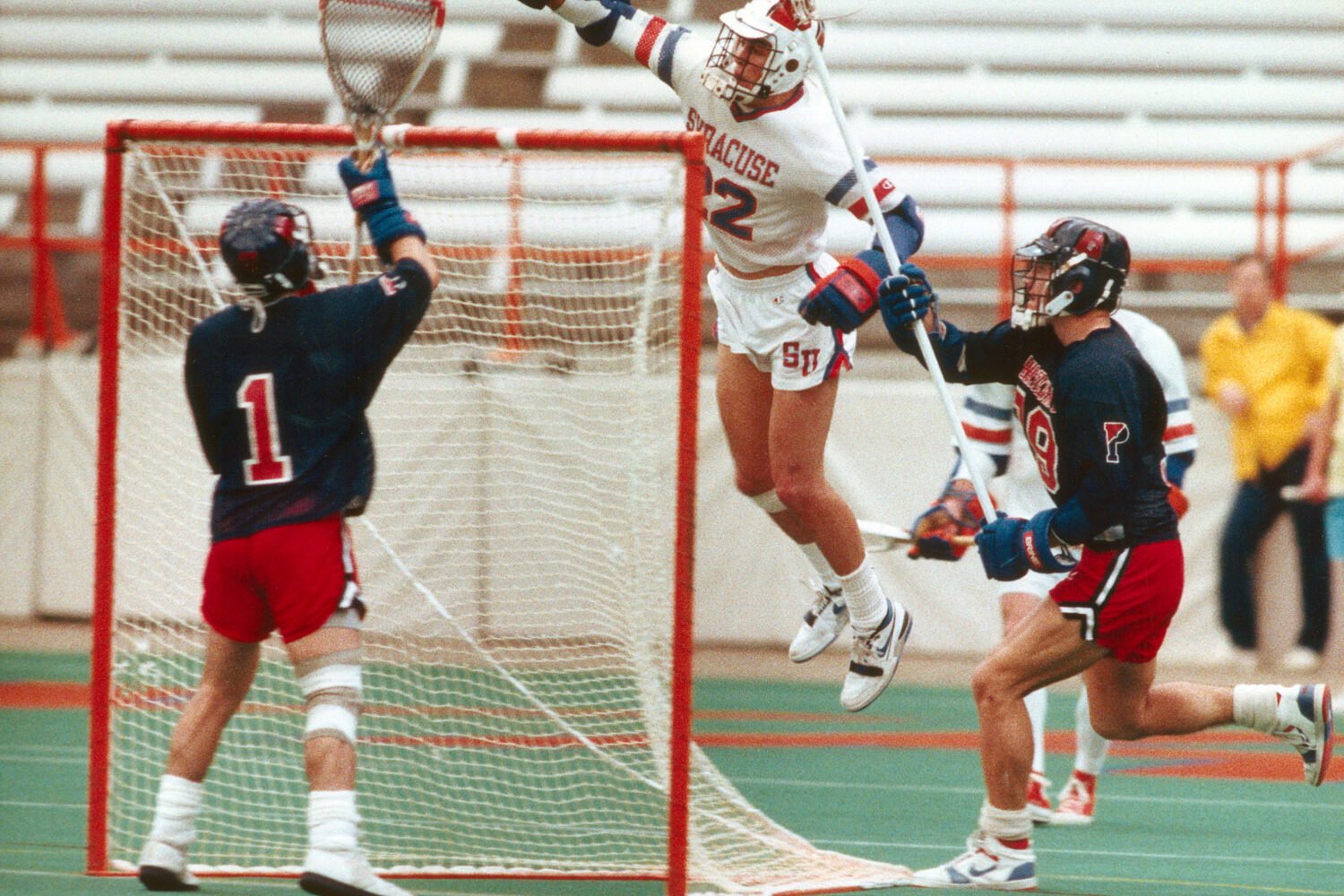Frances Tiafoe stands at a podium surrounded by family, fans, and children holding tennis racquets. He looks past a cluster of television news cameras, toward a storage room where he used to sleep.
“Let’s go, Big Foe!” someone yells from the crowd.
Tiafoe flashes a gap-toothed grin. He often likens his life to a movie. But Hollywood couldn’t script a more improbable journey. It’s a sweltering July afternoon at the Junior Tennis Champions Center in College Park. Before becoming one of the world’s top tennis players, the 25-year-old Hyattsville native and son of West African immigrants grew up here—smashing and volleying on courts his father helped build, smitten with a sport that has long been the playground of the white and wealthy.
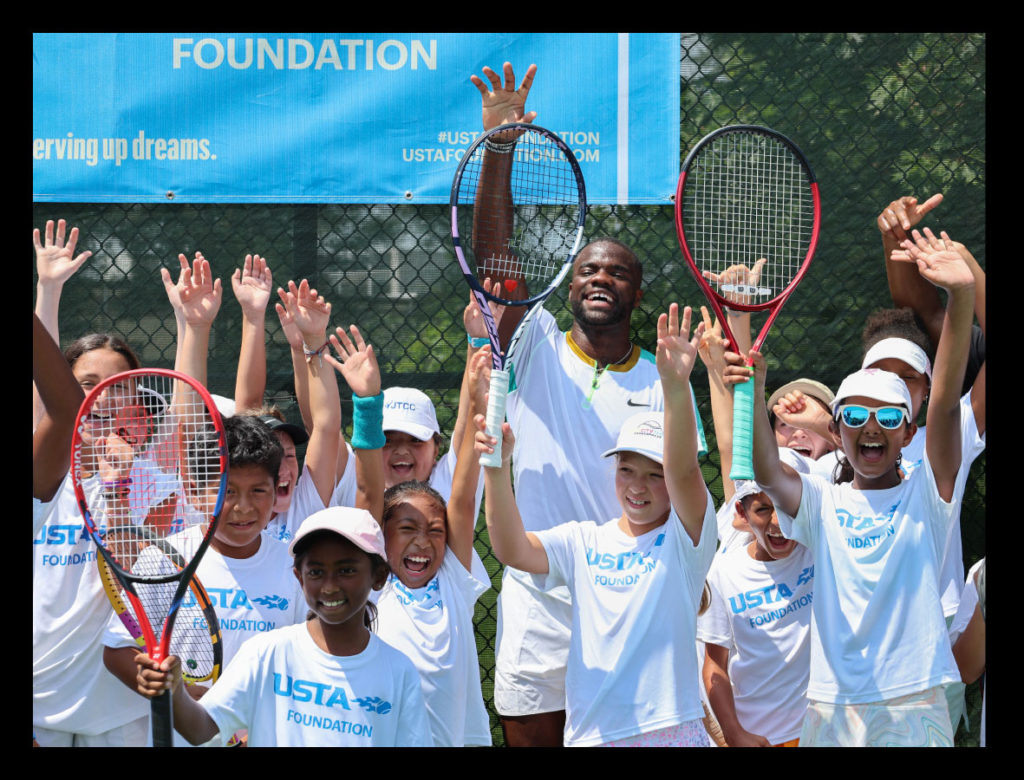
Tiafoe has returned to launch his charitable fund, which will help underprivileged kids play. He has little time to savor the moment. With former First Lady Michelle Obama cheering him on, Tiafoe went on an electrifying run at last year’s US Open, upsetting tennis legend Rafa Nadal en route to the semifinals. Budding fame has followed: a featured role in a Netflix documentary, a Gucci-clad appearance at a Vogue runway event, two baskets scored in the NBA All-Star Celebrity game. Earlier this week, Tiafoe received a new car from Cadillac. Minutes prior to his fund launch, he filmed a promotion for racquetmaker Yonex.
“Oooh, minty fresh,” says an emcee, handing Tiafoe a brand-new racquet.
“That’s a sexy racquet, for sure,” he replies, sheepishly smiling.
Tiafoe moves to a small tent. The cameras are waiting. Reporters, too. Tiafoe is ranked number ten on the ATP Tour, a career high. In late August, he’ll return to New York, aiming to become the first American man to win the US Open since Andy Roddick in 2003—and just the second Black American male champion since Arthur Ashe in 1968. Winning the tournament, Tiafoe says, is “something that I really want to do now. I mean, [if] I win a Grand Slam and have a terrible career after that, so be it. I did the unthinkable.”
Interview time is almost up. Tiafoe will soon be ushered to a nearby court, where he’ll lead children through a series of drills. The cameras will take it all in, and as he laughs and cracks jokes—happy and successful and enjoying a star turn—it will be easy to forget just how far he’s come.
“Nobody I’m competing against had my come-up,” Tiafoe says. “I’m not even having this conversation if I didn’t go through those moments. Life is a crazy journey.”

Misha Kouznetsov wanted a pupil. It was his first day coaching at the JTCC, and when he saw an eight-year-old Tiafoe, two things stood out: The boy loved tennis. And his father was tall.
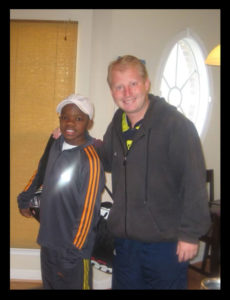
“I figured Frances was probably going to [grow] to be bigger and stronger than some of the other kids,” Kouznetsov says. “And because his dad worked there, he was always around. So I’d have as much time to work with him as I wanted.”
Francis Tiafoe Sr. was the JTCC’s maintenance manager, cleaning the campus by day and resurfacing its clay courts at night. Previously a day laborer on the crews that built the center in 1999, he had emigrated to the US from Sierra Leone. So had Frances’s mother, Alphina Kamara, who escaped a bloody civil war by winning a visa lottery in 1996.
Frances and his twin brother, Franklin, were born in 1998. When working double shifts at the JTCC, Francis Sr. lived out of an unused storage room; when Alphina worked night shifts as a nurse, the boys joined their father—sleeping on a spare massage table.
Many mornings, a preteen Frances would wake up, walk to a blue wall just outside the room painted with the outline of a tennis net and the words trust your training, and hit balls. In the evenings, he’d practice serving on empty courts. When he wasn’t in school, Tiafoe would pass time watching the Tennis Channel in the JTCC lobby. He’d wander the courts, stopping to observe as top juniors received high-level coaching. “I always remember him as a five-year-old, sitting on the bench, watching,” says JTCC president Vesa Ponkka. “His feet were just hanging in the air because he was so small.”
The center was founded by Ken Brody, a banker who served in the Clinton administration and died this past March. It focuses on helping youngsters—including locals from low-income backgrounds—become good enough to earn college tennis scholarships. Across its 32 courts, the vibe is competitive, but also positive and inclusive. “Tennis has many wonderful qualities, but it’s also very self-centered,” says Ray Benton, JTCC’s CEO. “You can turn out to be a brat. We try to have a spirit of giving back and helping.”
Within junior tennis, Tiafoe sometimes encountered a different spirit. He remembers being teased by wealthier kids for wearing cargo shorts instead of pricier gear, and for playing with discarded racquets. He couldn’t afford his own. “We’d go to tournaments and be laughed at,” he says. “It all fueled me.”
Kouznetsov could relate. He’d left his family in Moscow to live and train at a Florida tennis academy when he was 15, looking for a better life. While playing at the University of Maryland, Baltimore County, he realized he was “too short” to become a successful pro. He instead decided to coach—and burned to develop a future champion. “I was so hungry,” he says. “That’s why the whole Frances-and-I thing worked out. Two hungry guys, and poor. I came [to the US] with $60.”
Kouznetsov became Tiafoe’s surrogate tennis dad. He let the boy stay with him and his girlfriend on nights before out-of-town competitions, paid his tournament entry fees, helped tutor him one summer when he fell behind at school. After victories, Kouznetsov would reward Tiafoe with ice cream; if he didn’t try hard enough on the court, his coach made him run laps around a field at Georgetown Prep.
When practicing, Kouznetsov says, Tiafoe could be “lazy”: “You’d see 30 kids in the junior championships doing their fitness, all running, and Frances was the last one—walking.” Matches were a different story. JTCC coach Oliver Akli recalls a junior tournament in Florida where Tiafoe forgot to bring extra racquets and shoes. During a match, the young player called Akli over. He told the coach he’d broken the string on his racquet—and had a hole on the bottom of his shoe. “It was a big hole!” says Akli, who still works with Tiafoe. “His foot was touching the ground. But guess what? He won that match with my racquet and with that shoe. That was when I was like, ‘This kid, he can do a lot.’ ”
Tiafoe was teased for wearing cargo shorts instead of pricier gear, and for playing with discarded racquets. “We’d be laughed at,” he says. “It all fueled me.”
During car rides, Tiafoe and Kouznetsov would talk about playing professionally. The odds were slim. Even for youngsters with the rare and requisite talent, Kouznetsov says, it can cost hundreds of thousands of dollars in coaching, travel, and other expenses to become a world-class junior—and most of those players fizzle at the next level. “Normally with kids, you don’t even give them a 1-percent chance to make it,” Kouznetsov says. “‘But [Frances] was all in. He had no plan B.”
In 2012, Tiafoe won the unofficial under-14 world championship in France. At age 15, he became the youngest boy ever to win the Orange Bowl in Florida—a prestigious tournament that counts Björn Borg and Roger Federer among its champs. By then, Tiafoe was being sponsored by hedge-fund billionaire Bill Ackman, whom he’d met through Brody.
Ackman wasn’t the only believer in Tiafoe’s potential. In the summer of 2014, Tiafoe, his parents, and Kouznetsov attended a Beyoncé and Jay-Z concert in Baltimore. The group was invited backstage by the rapper, who personally pitched Tiafoe on turning pro and signing with his sports agency.
When Tiafoe first told his parents he planned to play tennis for a living, he was 12. Their response was lukewarm. “The goal was like, ‘Okay, you can play a little bit of tennis and have a scholarship to go to college,’ ” Francis Sr. says. Things change. In early 2015, Tiafoe won his first pro tournament while competing as an amateur and forgoing a cash prize. A month later, he turned pro—and made his parents a promise.
“He said, ‘Mom, if I go pro, I’m not going to disappoint you guys,’ ” says Alphina.

Tennis superstars tend to emerge early. From Serena Williams to Nadal, many won their first Grand Slams as teens—and never looked back.
Tiafoe’s ascent has been more halting. He ripped through lower-level tournaments just months into his pro career but struggled for years against highly ranked opponents. He beat his childhood idol, former US Open champ Juan Martín del Potro, en route to his first ATP title in Florida, then lost in the first round of the same tournament the next year. He reached the 2019 Australian Open quarterfinals to earn a career-high ranking of number 29. A year later, he’d fallen all the way to 84.
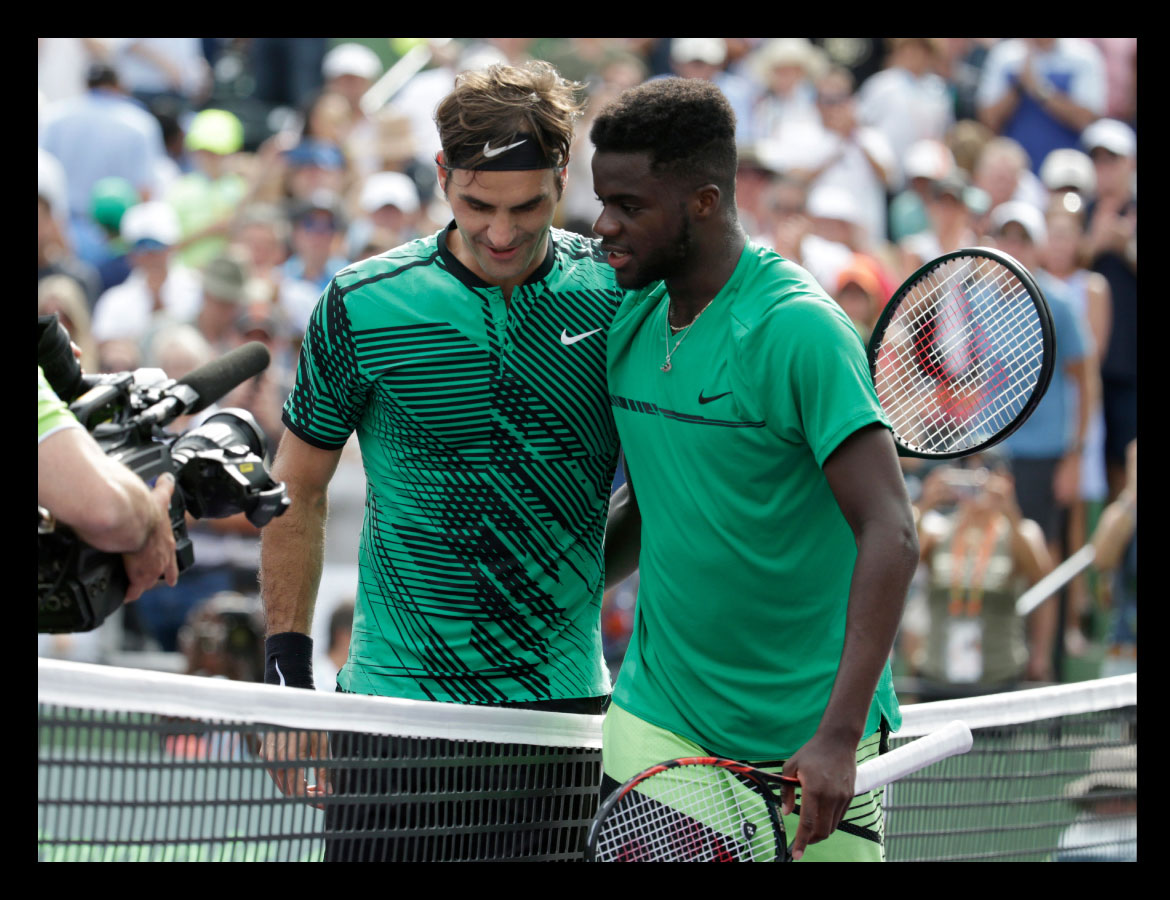
Tiafoe was well liked by fans and other players, charismatic and cheerful, quick to crack jokes and prone to celebrating big wins by ripping off his shirt and pounding his chest, a nod to basketball star LeBron James. He had bought Alphina a home in Maryland (Francis Sr. and Franklin live in Florida) and was making a good living on tour—no small feat in a global sport in which the lion’s share of prize and endorsement income goes to roughly 100 athletes while hundreds of others break even or lose money.
But Tiafoe wasn’t considered a serious contender. He had the tools to succeed—speed, soft hands at the net, an unorthodox yet crackling forehand, a sharp mind for the game. However, he regularly lost focus during matches. He’d occasionally spot someone he knew in the stands and start chatting. During one scrambling rally against Daniil Medvedev at the 2019 DC Open, Tiafoe hit a sensational lunging volley with his back to the net and began celebrating with the crowd, not noticing that Medvedev had managed to return the ball. For years, his most viral moment had nothing to do with his play: During a tournament in Florida, the loud, unmistakable sounds of a couple having sex in a nearby apartment building led Tiafoe to yell, “It can’t be that good!”
As recently as the first round of last year’s US Open, Tiafoe acknowledged his reputation. “I’m kind of Court 17,” he said, referring to the side courts at Grand Slam tournaments where the game’s lesser lights toil. “Get some cheeky wins.” Jessica Pegula, a top WTA Tour player and friend of Tiafoe’s, was more blunt: “I’m always kind of on him: ‘Can you win a match, like, normal and not be like this whole theatrical event?’ ”
Tiafoe says he was unprepared for money and fame, and that his relative success made him complacent when it came to training. He cycled through a series of part-time coaches and, crucially, lacked confidence against the game’s biggest names, including a straight-set shellacking by Nadal at the 2019 Australian Open. “[Frances] told me that he never, not for one second, thought he could win that match,” says Ponkka, the JTCC president.
In early 2020, Tiafoe took stock. Players who had been his junior peers, such as Andrey Rublev and Stefanos Tsitsipas, were ascending. He was stuck. Something had to change. He began working with Wayne Ferreira, a no-nonsense coach from South Africa who, as a player, had gone from being described by his junior coach as “a little bit lazy” to an ATP ironman who competed in 56 straight Grand Slams and was once ranked number six.
When the pandemic shut down sports that March, Tiafoe rebooted. For five months, he worked on his footwork. He made his ho-hum serve a weapon, faster and more consistent. He cut back on eating sweets, stopped skipping breakfast, got stronger and leaner. To help Tiafoe learn to focus, Ferreira banned him from using his smartphone during “business hours”—no texting, scrolling, or playing music while training.
The changes paid off. Coming back from a summer bout of Covid, Tiafoe won his first five-set match at the US Open—outlasting John Millman, an Australian known for his grit. In 2021, he beat Tsitsipas at Wimbledon and Rublev at the US Open to climb back into the top 40. When a sore elbow threatened to sideline Tiafoe in early 2022 for as long as six months, he chose physical therapy over surgery and resolved the pain with six grinding weeks of shoulder and neck exercises.
By the time he faced Nadal in the fourth round of last year’s US Open, Tiafoe had faith he could win—and an audacious plan to attack one of the most ferocious competitors and counterpunchers in tennis history. Matching Nadal’s unwavering intensity and blasting high-risk shots down the lines, he won in four sets. When it was over, Tiafoe stood on the court with his hands on his hips, tearing up. Afterward, he said he felt like a different player—and a different person. “He has the right team around him and he’s getting more mature,” Alphina says. “He knows that ‘this is where I want to be.’ ”

Tiafoe’s US Open performance changed his life. LeBron James shouted out his victory over Nadal on Twitter. Actor Jamie Foxx joined Michelle Obama—and frankly, what seemed like all of New York—in rooting for Tiafoe during a five-set semifinal loss to eventual champion Carlos Alcaraz. Since then, Tiafoe has modeled underwear for Calvin Klein and worn earbuds for Beats. During Wimbledon this summer, a Barclays ad featuring his image was plastered on a double-decker London bus.
“I have friends who run tournaments from the Australian Open to the Vienna Open, and for years they would tell me that Frances was the most popular player there outside of people from their home countries,” says Mark Ein, chairman of the Mubadala Citi DC Open and a Chevy Chase native who has known Tiafoe for years. “He could always light up a crowd. But now that’s at a completely different level.”
In tennis, stardom can be a competitive advantage. More fame means more endorsement money, which can be invested in better coaching, training, and comfort when crisscrossing the globe to keep up with the sport’s demanding, year-round schedule. Conversely, the demands of fame can steal time and sap energy—there’s always another interview to sit for, another sponsor to glad-hand. On the court, expectations rise. Pressure builds. Tennis history is littered with players who struggled after seeming to break through. The weight can be heavy.
When Tiafoe was 11, he was mentioned in a Washington Post article; a year later, he was featured in the New York Times. He told his father, Francis Sr., that the attention made him uncomfortable. Listen, his father replied, there are two times that cameras follow you in this country—when you’re doing good or when you’ve been caught. “And that’s it!” Francis Sr. says now with a laugh. “So be happy you’re not in the second category.”
Tiafoe is doing well these days. His longtime girlfriend, Canadian tennis pro Ayan Broomfield, is a frequent presence at his matches. When he isn’t on the road, Tiafoe splits his time between Florida, where his father and brother live, and the DC area, where he visits his mother and hangs out at the JTCC. “Everyone here gets so excited to see how far I’ve come and [has] known me for so long—that kind of love, you can’t really beat,” Tiafoe says. “I feel so at home here.”
On the court, Tiafoe has maintained his momentum, winning tournaments this year on clay and grass while becoming just the third-ever African American man to reach the top ten. “Frances admitted to us that [the fame] might have gotten to him a little bit,” says JTCC director of fitness TC Costello, who trains and sometimes travels with Tiafoe. “But honestly, he’s dealt with it pretty well. Early in his career, he went down after he went up, and I think that experience has helped him. He’s like, ‘I’m not gonna let that happen again.’ ”
At the US Open, Ferreira challenged him to aim even higher. “It’s a great story,” he said of Tiafoe’s journey. “Hopefully, there will be a movie about it one day. But he has to win [a] Grand Slam first. You only get movies if you do well.”
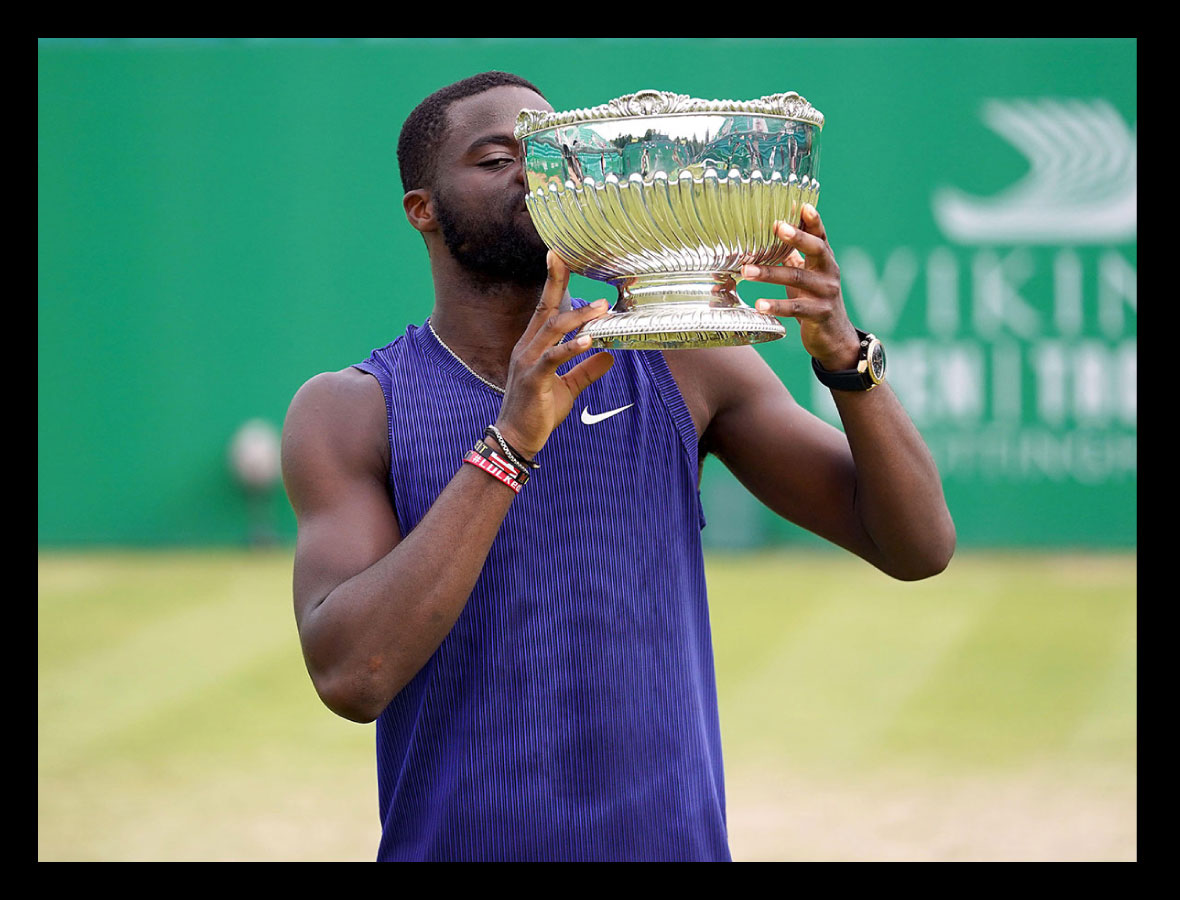
Tiafoe has embraced that goal: Moments after losing to Alcaraz, a teary-eyed Tiafoe told fans at Arthur Ashe Stadium that he would “come back, and I will win this thing one day.” Whether he can make good on that promise remains an open question. Over the past 20 years, only 15 different men have lifted a championship trophy at either Wimbledon or the Australian, French, or US Open. “You have to win seven matches, best-of-five-set marathons, over two weeks,” Ein says. “Invariably, there’s late nights, weather delays, the toughest opponents. It’s one of the hardest things to do in sports.”
“He could always light up a crowd. But now that’s at a completely different level.”
Tiafoe has beaten the odds before. At an early-round match at the DC Open in early August, his parents and JTCC coaches are in his player box. Basketball star Kevin Durant, another local boy made good, sits courtside. After Tiafoe wins, the two embrace on the court. Tiafoe moves to a press tent, a towel draped over his shoulders. Once upon a time, he says, he was a kid with big dreams, wearing hand-me-downs and sneaking into the tournament. “Now I’m playing,” he says. “People are here to see me. You want to keep these moments going. You want to make them be [normal], not just a once-in-a-lifetime thing.”
Tiafoe exits through a set of double doors. The night is warm. He has friends outside, waiting, and more matches to come. His life might read like a Hollywood screenplay, but not entirely. Too much has yet to be written.
This article appears in the September 2023 issue of Washingtonian.
